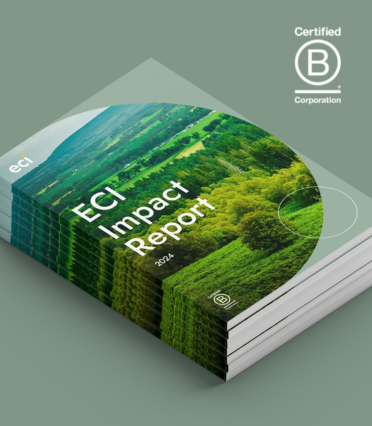We take pride in how many of the management teams we’ve backed have turned from strong domestic players into multi-national global market leaders. Whether we look back at Auction Technology Group’s expansion into Germany and North America, Arkessa and Wireless Logic’s growth into Northern Europe, MPM’s internationalisation into Asia and the US, or Imagesound’s growth in Asia and the US – it is clear to see how transformative international expansion can be for the management teams we partner with.
With global growth a common route for companies looking to expand their addressable market, it’s no surprise we regularly support teams to deliver on this ambition. But, how do you go from the aspiration of internationalisation to execution? Here are our top tips:
1. Be focussed
At last count, there are 195 countries in the world. You can’t tackle them all, so as the saying goes – it’s better to do one thing and do it well. Starting with one specific market or a targeted region, where you have a sound rationale behind that strategy, will increase your chances of success.
How do you select that region? It’s important to think about what factors will dictate the scale of the market opportunity, and how easy it will be to target it. This is often an iterative filtering process, starting with higher-level macro filters, and using those to prioritise a short list, usually 3-5 target countries where you can focus your research and gain more depth of insight.
Case study: When we invested in Wireless Logic, becoming a European leader in the IoT space was a top priority post-investment. We helped the management team in their review of a range of factors such as the number of IoT connections in market and relationships with the local MNOs. Germany had been highlighted as the lead market to prioritise, which we validated and then supported the team to also understand the potential across France and Spain. That allowed us to help the team develop specific entry plans in each market, one a pure organic play and one a joint venture with a local partner. These focussed plans for each region meant the business successfully saw growth from each market, contributing to Wireless Logic being the genuine European leader by the point of exit.

2. Understand the local market
Once you have your hypotheses as to which country presents the biggest and most addressable opportunity, it’s time to drill down. You’ll need to validate your initial hypothesis using data, but also, most importantly, by talking with people in the local market. Conversations with people on the ground will help you to understand specific sub-segments you should focus on, such as geographic areas, customers, or products/services. They can also help you think through a go-to-market strategy, for example, if you are setting up a sales team or with partners, and which marketing channels to prioritise. They can help you understand the competitor landscape and how you might differentiate, and whether you might be better placed acquiring rather than competing with them. Telephone interviews are a useful starting point for gathering intel, industry events are also a great way to meet a large volume of potential customers and competitors in a short space of time.
Case study: The Commercial Team supported Auction Technology Group with a deep dive into key European geographies including Germany and the broader DACH region. Through desk research, telephone interviews and an online survey, we built out our understand of the art and antiques market, the auction house landscape, buyer preferences and the competitive landscape. This ultimately resulted in ATG’s acquisition of Lottissimo, a German player, as their first step into the European market.

3. Have a clear plan
Now you have a detailed understanding of your target market, and what factors will likely lead to success, you can build a plan. One of the first questions we consider is whether you are going to grow organically or acquire into the target geography. At the start we frequently see companies pursue both strategies in tandem. Acquisitions may be the ideal route, in which case it’s important to start building an M&A pipeline and start outreach to potential targets as soon as possible. This will allow you to see the viability of the inorganic route, and if it looks like you can’t find the right businesses where you want to expand into, you then have an organic entry backup plan to fall back on.
Case study: The ECI Origination team supported Arkessa to map all IoT businesses across Europe, working with the management team to prioritise them by attractiveness, taking into account factors such as scale, geography and growth. The Origination Team started outreach with the prioritised targets and connected the Arkessa management team with a Dutch business, Sim Services. The combined ECI team then supported Arkessa on due diligence and deal execution, leading to Arkessa’s first international acquisition.

4. Give it the focus it deserves
As we have seen over and over from our experience, if you can execute internationalisation, you can create huge value growth. However, it’s no walk in the park, it takes effort. The businesses that succeed make it a priority, which ultimately means other things cannot happen because of it. It needs to become a board topic, with everyone around the table understanding and inputting into the plan and its progress. It means sponsorship from the CEO, and often that means they need to spend significant time on the ground in that geography, building relationships, and delivering on the plan or iterating as needed.
This focus should run throughout the organisation, and that often means taking some of your best talent from your home geography to help set up and get the business running in your new location, in line with the values and operations of the HQ.
Case study: Growth in the US was a strategic priority for Moneypenny, and one that we started to work on with the management team before we even invested in the business. The ECI Origination Team helped to map a series of acquisition targets in the US, and within two months of investment, the team were supporting management to diligence a prospect in Salt Lake City, Utah. When VoiceNation was acquired in early 2020, CEO Joanna Swash was focussed on delivering an integration plan with the existing organic operations in the US. This involved sending many leaders of the UK senior team in turn over to the US to help oversee the integration of the local Moneypenny business with the new team acquired.

5. Keep at it
As we’ve mentioned, internationalisation brings with it huge rewards, but it’s not easy. As with most things in life, the only thing you can rely on is that things will not go exactly as you have planned. Whether it’s acquisition targets that don’t make it past diligence, local hires that don’t work out, or sales forecasts that shift to the right. The companies we’ve seen be successful internationally have had to deal with it all. Don’t let those knockbacks put you off, but remain nimble, reiterate your plan as you learn, and keep your eye on the prize.
If you’d like to find out more about how can help management teams with their international ambitions, please get in touch.


